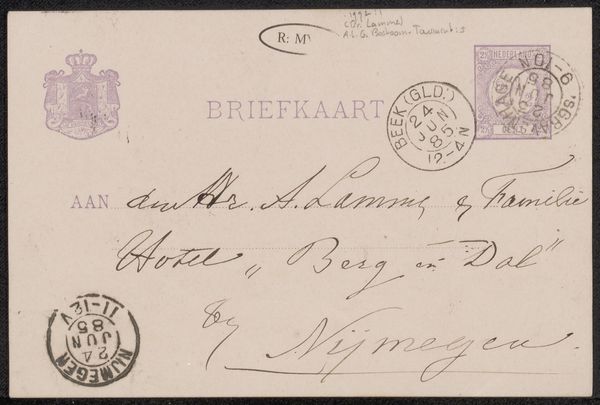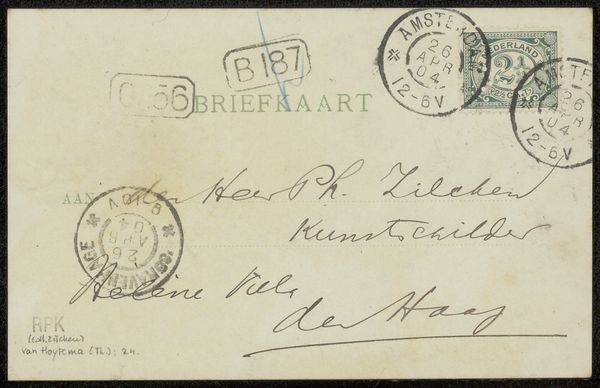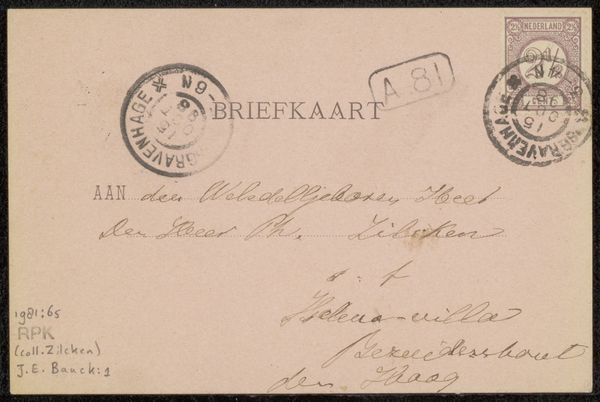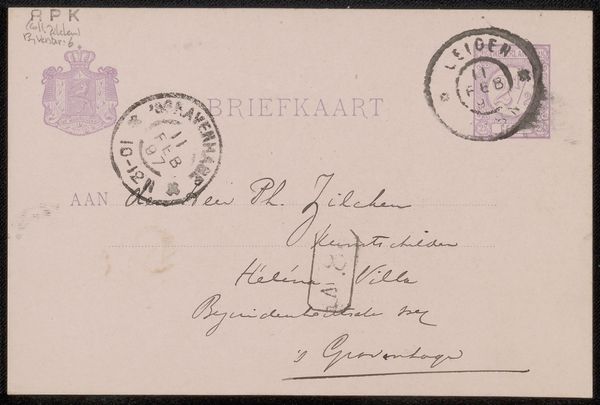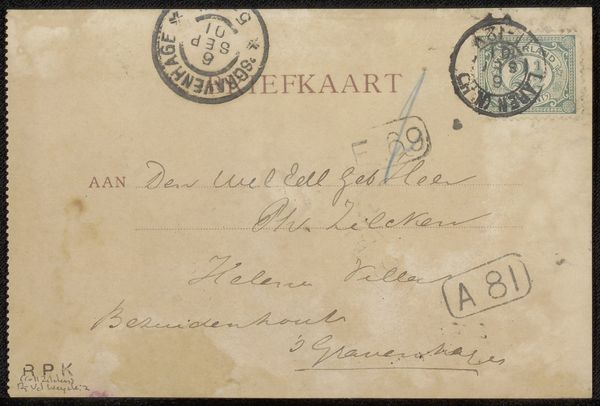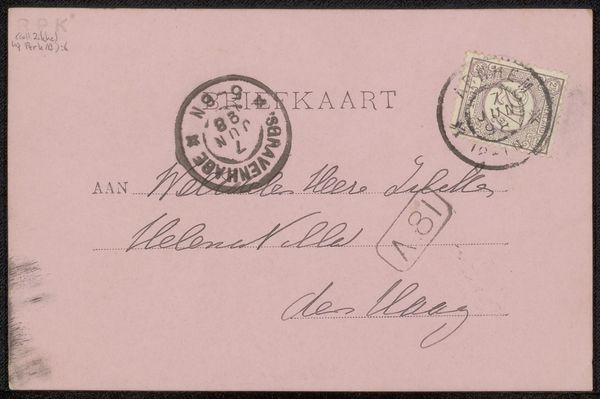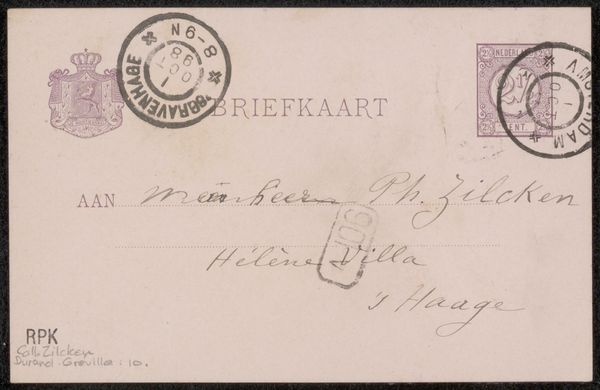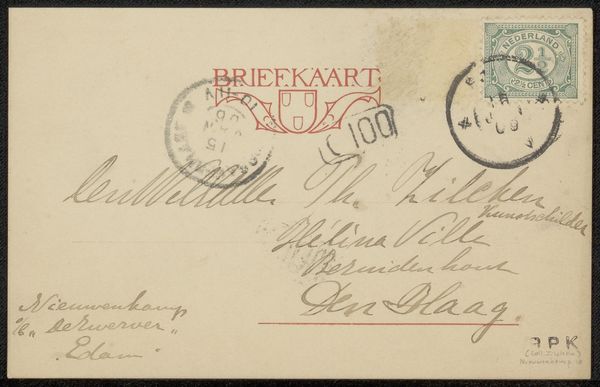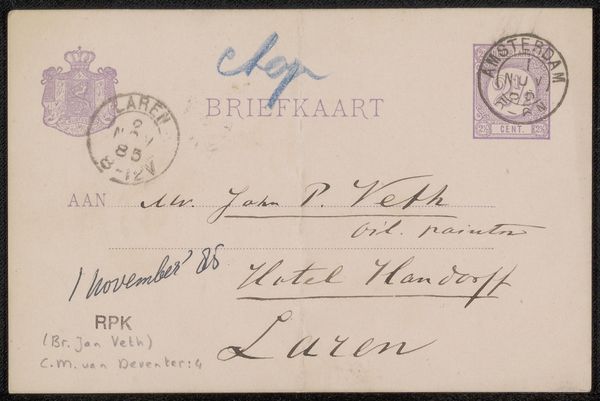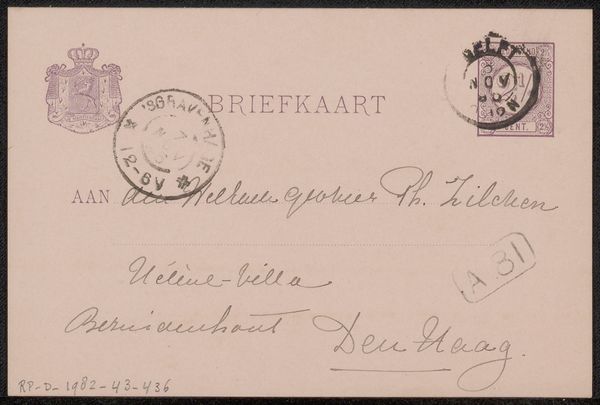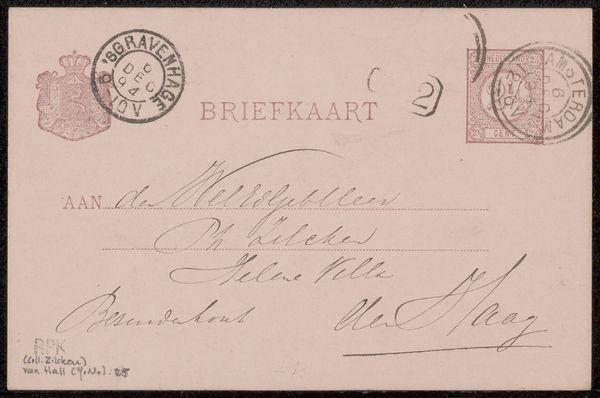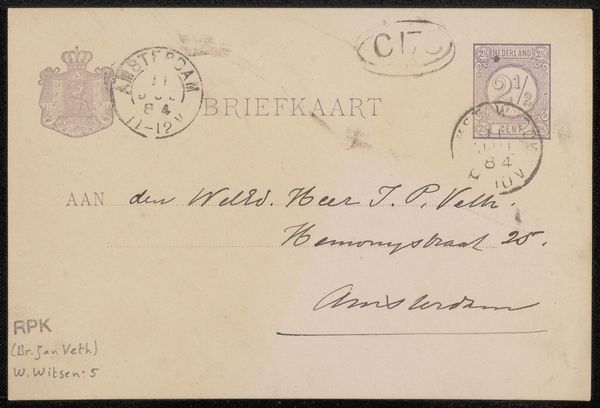
drawing, paper, ink, pen
#
drawing
#
paper
#
ink
#
pen
#
post-impressionism
Copyright: Rijks Museum: Open Domain
Curator: This is "Briefkaart aan Philip Zilcken," a postcard potentially dating back to 1898, by Bart van Hove. The medium is ink on paper, executed with a pen. It resides here at the Rijksmuseum. Editor: I'm immediately drawn to its intimacy; it feels like a direct connection to a moment in time. The handwritten script, the faded ink... It speaks volumes, even before deciphering the words. Curator: Precisely. The materiality itself is crucial here. Think about the accessibility of postcards during that era—mass-produced paper, affordable postage. It democratized communication, allowing for a more transient exchange of ideas and information outside the sphere of what might have traditionally been recorded or valued as art. Editor: I'd argue that it also tells a story about class and social mobility. Who had the leisure and means to correspond in this way? What networks were being cultivated through these seemingly mundane exchanges? Curator: We know that van Hove, coming from a family steeped in artistic labor—his father was a master of the drawing academy—would have deeply understood the means of pictorial production from start to finish. It makes me wonder about the kind of ink he used and the specific type of pen, even the source and production of the paper. Editor: And let’s think about Zilcken, the recipient. These postal artifacts circulated amongst networks involved in arts and culture. As art practitioners, the labor is the culture! Also, notice how the postal marks function both to enable commerce and establish institutional authority. Curator: Indeed. Those stamps, the postmarks – they are physical markers of its journey through the postal system. Each mark and scratch tells a small story about process and human handling. It shows this object had utility, to convey a message; the art is almost secondary. Editor: While seemingly informal, there's still a performative aspect to communication in that historical moment. Gender, societal roles, the construction of relationships... all mediated through this material exchange. Curator: Absolutely. I think what's so compelling is how much information a simple object can hold about the everyday labor of living in the late 19th century. We get so accustomed to instantaneousness today that physical letters or notes seem ancient! Editor: Precisely, seeing how it has lasted for a century calls our present into question. I leave appreciating both what was sent and how it made it into the museum.
Comments
No comments
Be the first to comment and join the conversation on the ultimate creative platform.

